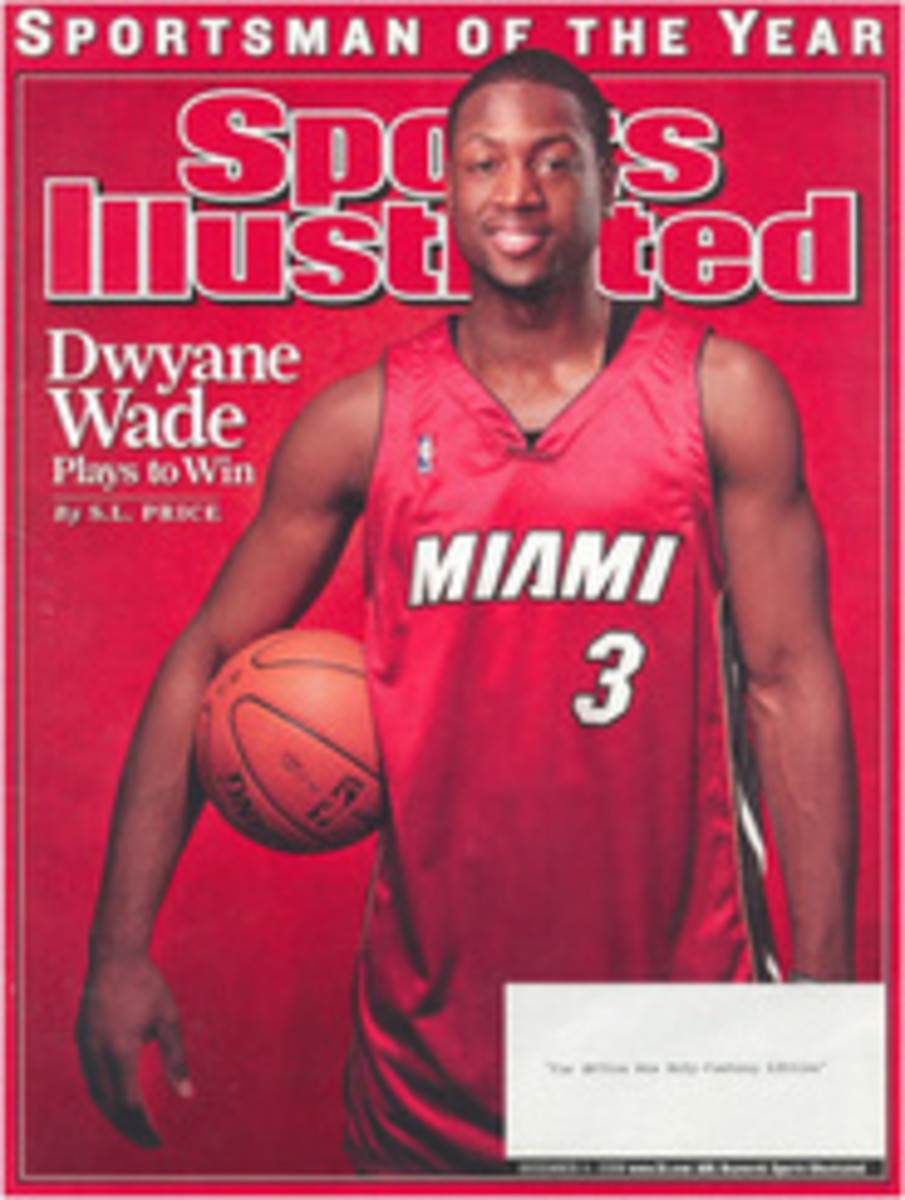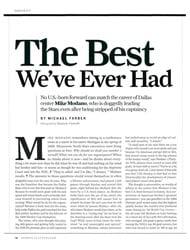
Don't Count Him Out
TUNNEY: BOXING'SBRAINIEST CHAMP AND HIS UPSET OF THE GREAT JACK DEMPSEY
by Jack Cavanaugh
Random House, $27.95
Fifteen seconds.That's how long Gene Tunney sat on the canvas in Chicago's Soldier Field on thenight of Sept. 22, 1927, put there by a Jack Dempsey barrage in the seventhround of their second fight. Just 15 seconds out of a professional boxingcareer that spanned 14 years and 77 bouts, yet in a way that's where Tunneyremains to this day, pale and frozen on that canvas as the ref tolls the LongCount.
Never mind that itwas the only time in his career Tunney was knocked down, or that (once Dempseyretreated to a neutral corner) he got up before the official count of 10 andresumed boxing the ears off Dempsey to easily win the decision, just as he hadeasily won their first fight. Never mind that he retired as heavyweightchampion and went on to success in business and enjoyed the friendship ofliterary luminaries George Bernard Shaw and Thornton Wilder. For all of hisaccomplishments in and out of the ring, Tunney remains an enigma, rememberedchiefly for that moment of controversy against Dempsey.
In hisimpressively researched and richly detailed book Cavanaugh goes a long waytoward fleshing out this complex man, while also making the case that Tunney,often dismissed as a defensive powder-puff puncher, was one of the bestfighters in history. In the process Cavanaugh provides a colorful depiction ofAmerica during the 1920s, when such sporting icons as Dempsey, Tunney, BabeRuth and Red Grange mixed with Al Capone and flamboyant New York City mayorJimmy Walker.
Born in New YorkCity's Hell's Kitchen in 1897 to Irish immigrants, Gene Tunney grew up as agood student and an accomplished athlete. His mother fervently hoped that hewould enter the priesthood, but he followed his stevedore father into work onthe docks. It was his father, a lifelong boxing fan, who gave young Gene hisfirst pair of gloves. Though never a street fighter (unlike Dempsey, who grewup brawling in the mining towns of Colorado), Tunney took to the discipline ofboxing. He had his first professional fight, winning by a knockout, at age 18.But it was only after he won the American Expeditionary Forces lightheavyweight title while serving as a Marine in France four years later that hededicated himself to the sport. His goal, he said at the time, was to wrest theheavyweight title from the sensational new champion, Jack Dempsey.
That he did justthat, seven years later (a 10-round decision in Philadelphia), was testament tohis remarkable abilities and discipline. But it was also what damned himforever in the eyes of boxing fans. Once reviled as a draft dodger, Dempsey indefeat became far more popular than ever before, and the man who beat him--theFighting Marine, no less--was derided as an aloof, bookish (he readsShakespeare!) pretender. Cavanaugh thoroughly examines that dichotomy betweenthe two fighters and provides a long-overdue portrait of a fascinatingfighter--allowing its subject, at last, to rise from that canvas inChicago.
Touched by a Tomato Can
ROCKY STORIES: TALES OF LOVE, HOPE, AND HAPPINESS ATAMERICA'S MOST FAMOUS STEPS
by Michael Vitez; photographs by Tom Gralish
Paul Dry Books, 129 pages, $22.95
Rocky Balboa is the anti--Gene Tunney: a clumsy,inarticulate, lead-with-your-face southpaw who waited years for his title shotand then lost. Yet the Italian Stallion has been embraced in a way the FightingMarine never was. Admittedly Rocky is a fictional character, but from his first"Yo!" in 1976, through four increasingly cartoonish sequels (with afifth due soon), Sylvester Stallone's lovable pug has inspired fans around theworld.
The extent to which the Rocky myth--that of theperennial loser who proves he's "not just another bum from theneighborhood"--has resonated is documented in this winning book. Vitez, aPulitzer Prize--winning writer for The Philadelphia Inquirer, and Gralish, aphotographer for the paper with his own Pulitzer, spent a year at thePhiladelphia Museum of Art photographing and interviewing people who came thereto run up its 72 steps, just as Stallone did in Rocky. Vitez and Gralishpresent the stories of 52 would-be Rockys--young, old, black, white, male,female, able-bodied and wheelchair-bound; from Britain, Japan, Italy, Bulgariaand across the U.S. The tone can be schmaltzy, yet each story is engaging.
As 22-year-old Michael A. (Moose) Glorioso Jr. put itafter completing his run on a sunny day, "I see [Rocky] as one of the greatAmerican heroes.... He shows how, with hard work and dedication and a belief inone's self, you can achieve anything." To that, what can one say but"Yo!"
TWO PHOTOS
ERICK W. RASCO
PHOTO
UPI/CORBIS-BETTMANN
BAD CORNER, MAN
Dempsey got Tunney down, but couldn't get him out in their rematch

